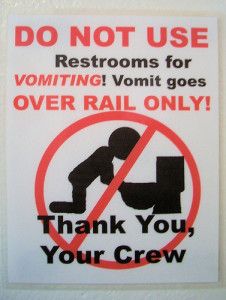Denver Broncos kicker Matt Prater was sent home before practice for a third consecutive day because of a suspected Norovirus infection — in part, for him to recover and in part to prevent any other players from getting sick.
It’s a model that could well serve the food sector.
Mike Hughlett of the Star Tribune reports the spread that caterers served at two prep sports banquets last month betrayed no hint of what lurked  within.
within.
Athletes from the Totino-Grace football team and the Fridley girls swim team dined on roast beef and rotisserie chicken at the prestigious Edinburgh USA country club.
The next day, the meal bit back. Students called in sick for school, parents couldn’t go to work.
They’d been hit by norovirus, the leading cause of foodborne illness. The likely culprit? Sick food service workers.
Since at least 2006, the Minnesota Health Department has concluded that sick workers were the likely or suspected cause of over 72 percent of all norovirus cases on average each year. “It’s one of the biggest problems in food safety, and arguably the biggest,” said Kirk Smith, head of the state Health Department’s foodborne disease investigation unit.
Restaurants and food service operators are supposed to have strong practices to keep ill employees out of the kitchen. But sometimes, policies aren’t adequate or properly communicated to workers, who  often have an economic incentive to work because otherwise they won’t get paid.
often have an economic incentive to work because otherwise they won’t get paid.
“For these policies, it’s one thing to have them, and another thing to implement them,” said Jason Newby, Brooklyn Park’s code enforcement and public health manager. “At the end of the day, it starts with the manager. But the staff needs to tell management when they are sick, too.”
They often don’t. In a study published last month in the Journal of Food Protection, almost 60 percent of food service workers surveyed — including some in Minnesota — said they had worked while ill, mostly without management’s knowledge. Twenty percent of those worked at least once while vomiting or experiencing diarrhea.











